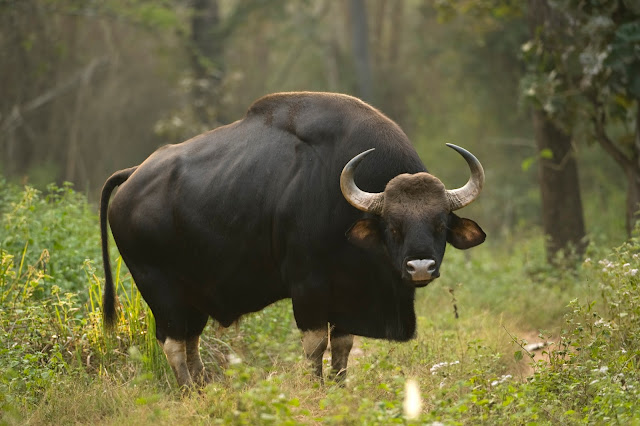Purple Frog - A Mysterious Amphibian
Let's talk about less known and recently identified "Amphibian"
Introduction
- Nasikabatrachus sahyadrensis is a frog species belonging to the family Sooglossidae.
- It can be found in the Western Ghats in India. Names in English that have been used this species are purple frog, Indian purple frog, or pig nose frog.
- The existence of the purple frog was not known until 2003 .
- These burrowing frogs are the last of a group of ancient amphibians that evolved over 120 million years ago.
- They are extremely rare and listed as an endangered species.
Physical Characteristics
- The body of this frog appears robust and bloated and is relatively rounded compared to other more flatted frogs.
- Its arms and legs splay out in the standard anuran body form. Compared to other frogs, purple frog has a small head and an unusual, pointed snout.
- Adults are typically dark purplish-grey in colour. Males are about a third of the length of females.
- The specimen with which the species was originally described was 7 cm long from the tip of the snout to the vent.
- The tadpoles of this species have oral suckers that allowed them to live in torrential streams.

Population
- Field researchers have identified only 135 individuals, and all but three of these were male.
Distribution
- The species is now known to be widely distributed in the Western Ghats, ranging from the Camel's Hump hill Rang in the north, all the way to the northernmost portions of the Agasthyamalai Hill range in the south.
Ecology
- The frog spends most of its life underground and surfaces only during the monsoon, the mating. With few field scientists out in the field during the rainy season the species was discovered and studied only in recent times.
- Males emerge to call beside temporary rainwater streams. They mount females and grip them along the vertebral column.
- Around 3000 eggs are laid in a rock pool and the tadpoles metamorphose after around 100 days.
- Unlike many other burrowing species of frogs that emerge and feed above the ground , this species has been found to forage underground, feeding mainly on termites using its tongue and a special buccal groove.
Threatened and Conservation
- The purple frog is threatened by habitat loss, resulting from deforestation for coffee and cardamom plantation in the region.
- It has been enlisted as an "endangered species" in the Red list compiled by the IUCN.
- Sadly, facts about the purple frog are as elusive as the creature itself. Whatever little is known about it comes from the 135 specimen that have been studied so far.
- The lack of information is adversely affecting the species, by making it difficult for conservationists to formulate proper conservation measures.
- In the absence of conservation plans in their hour of crisis, this species will definitely have a tough time trying to survive. Worse of all, because of its reclusive nature, it will be years before we realize that the frog has become extinct ... if at all.




Comments
Post a Comment